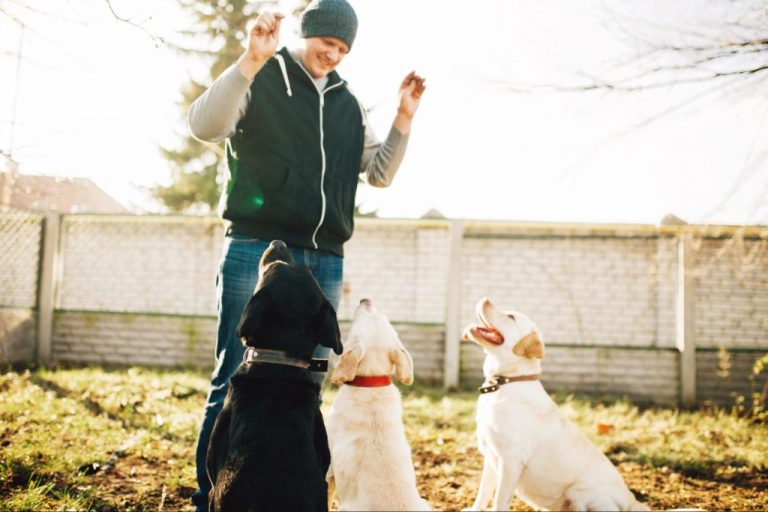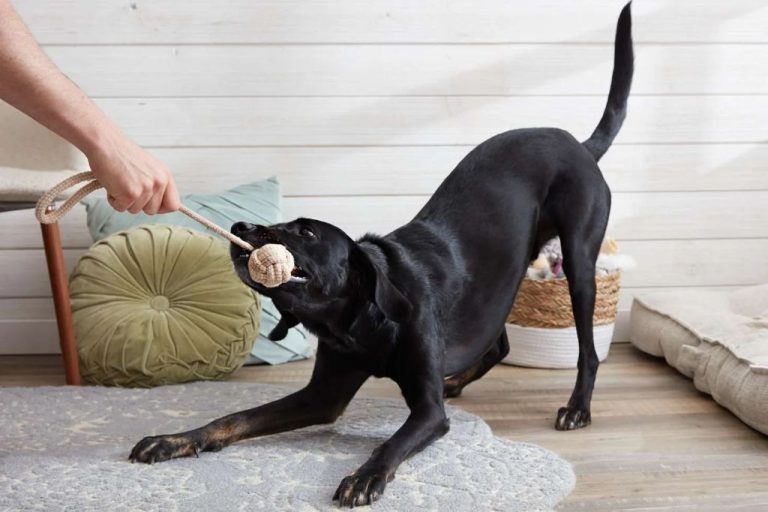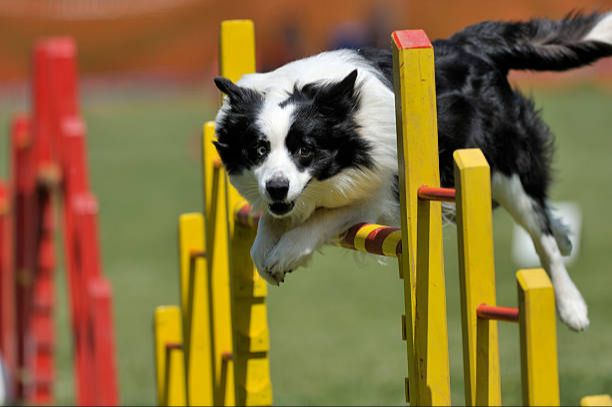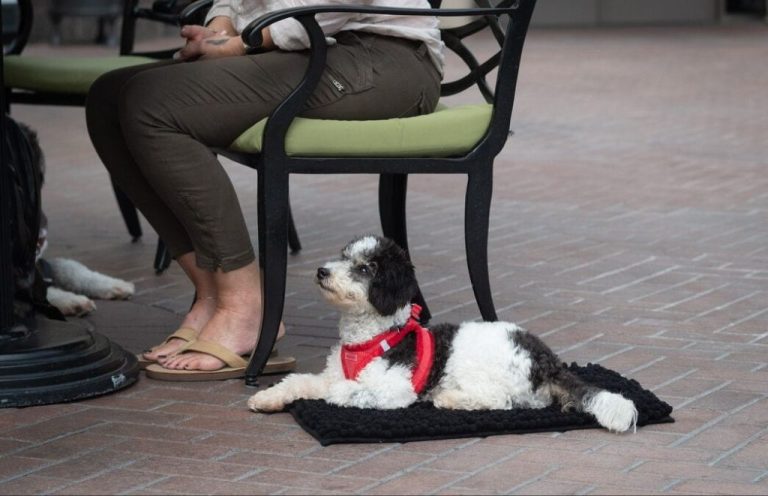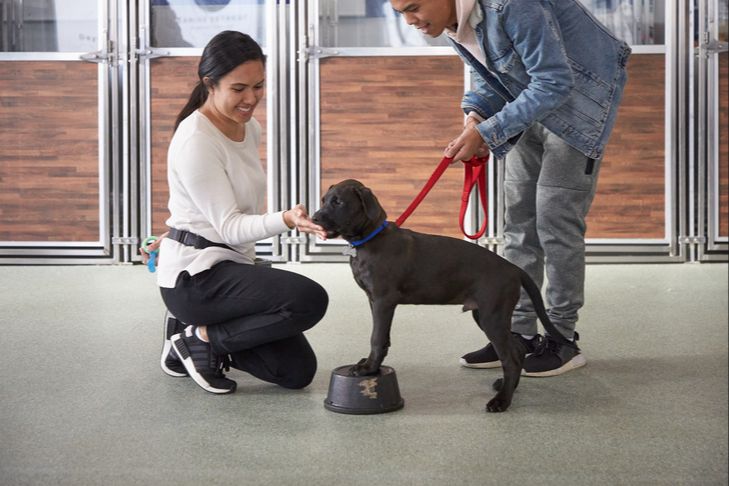Teaching Your Dog To Greet Guests Politely
Why It’s Important to Teach Proper Greetings
Teaching your dog proper greeting manners helps set clear expectations for behavior when guests arrive. A well-mannered greeting promotes safety for all involved by preventing jumping, mouthing, or biting that some dogs resort to out of over-excitement. Establishing a polite routine also makes positive first impressions on guests and helps your dog form good habits from a young age.
Dr. Ward, who saw no aggression during this study, found that more than 80 percent of the greetings were unreciprocated. According to the study in A Guide to Dog-to-Dog Greetings, teaching dogs proper greeting behavior prevents them from being perceived as rude or aggressive when greeting unknown humans or dogs.
Understand Your Dog’s Motivation
There are several key factors that motivate dogs to jump when greeting guests:
Excitement – Many dogs jump due to sheer excitement and joy when someone new comes to the door. It’s a natural way dogs express their enthusiasm.
Curiosity – Dogs are innately curious animals. Jumping allows them to get closer and inspect newcomers.
Anxiety – Dogs who are anxious or insecure may jump to relieve stress. Greeting strangers gives them reassurance.
Fear – Timid or fearful dogs may jump as a self-defense reaction. They want to ward off strangers proactively.
Understanding the underlying reasons why your dog jumps can help you address the root cause during training. For example, if your dog jumps from excitement, you can teach an alternative behavior to let out that energy. If they jump from fear, you can use desensitization tactics. Key is determining what motivates the behavior.
Start Training Early
Starting training early with your puppy is highly recommended by experts. Puppies go through important developmental phases during their first year of life, which makes them more receptive to training. According to the American Kennel Club, the most critical period is between 8 and 16 weeks when puppies are most impressionable. During this time, it’s easier to establish good habits before bad habits develop. Research shows that puppies can begin basic training as early as 7-8 weeks when their small brains become capable of retaining information.
The early weeks are also vital for proper socialization. Puppies need frequent positive exposures to people, places, sounds, and experiences during this developmental stage. Starting training gives you more control over your puppy’s environment and social interactions. With proper training and socialization during the critical period, you can help your puppy grow into a well-adjusted adult dog.
Use Positive Reinforcement
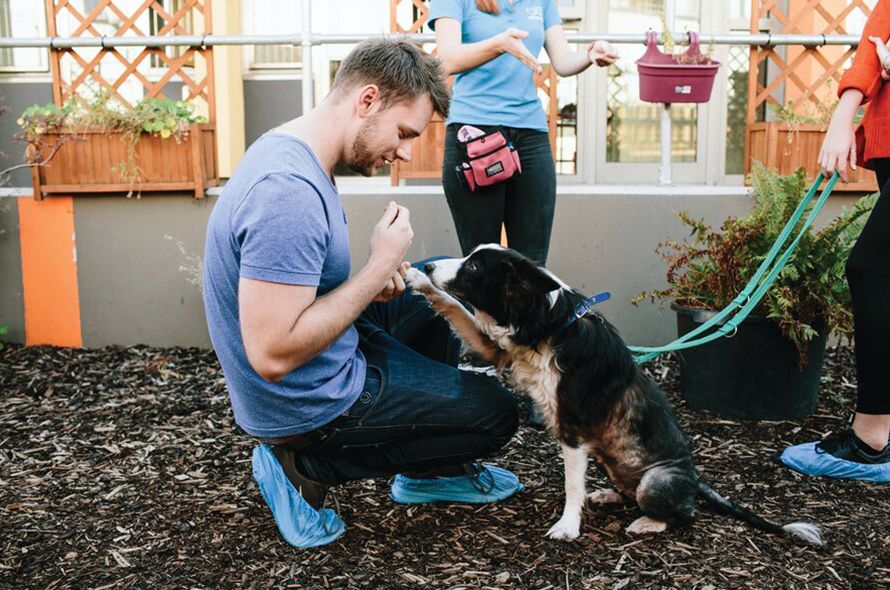
Positive reinforcement can be an incredibly effective method for training dogs. The basic idea is to reward your dog when they display the behavior you want them to exhibit more often. For greeting guests politely, you’ll want to reward your dog when they remain calm in the presence of visitors.
Some examples of positive reinforcement include giving your dog praise, petting them, or giving them a treat when they don’t jump on guests. You can even use a clicker to mark the exact moment the desired behavior occurs. The reward should come immediately after so your dog associates that behavior with something good happening.
It’s also important to remove any rewards for unwanted behavior. Don’t pet, talk to, or give any attention to your dog if they jump on a guest. Turn away and withhold all attention until your dog calms down. This teaches them that calm behavior gets rewarded, while hyper behavior is ignored.
Studies show that positive reinforcement dog training creates more consistent results compared to punishment-based methods (https://www.humanesociety.org/resources/positive-reinforcement-training). Dogs want to please their owners, so rewarding good behavior motivates them to repeat it.
Teach Basic Obedience First
Before you can teach your dog to politely greet guests, it’s important to have a foundation of basic obedience. The key commands to master are sit, stay, come, and heel. According to the Battersea article, your dog should reliably respond to these commands before moving on to greeting training https://www.battersea.org.uk/pet-advice/dog-advice/how-teach-your-dog-greet-people.
Start by teaching your dog to sit on command. Use positive reinforcement by rewarding with treats and praise each time your dog successfully sits when given the verbal cue. Once your dog consistently sits on command, work on extending the duration with the stay command. Again use positive reinforcement to reward your dog for remaining in a sit position for progressively longer periods of time.
The come command cues your dog to come directly to you from a distance. Reward your dog for coming to you each time you give the command. For the heel command, reward your dog for walking attentively by your side without pulling on the leash. Mastering these basic obedience skills will provide the foundation needed for greeting training.
Have Guests Ignore Your Dog
One of the most effective ways to discourage jumping is to teach guests to completely ignore your dog when they first enter your home. This means no eye contact, no touching, and no talking to your dog until he has calmed down and has all four paws on the floor. As Goddard Veterinary Group notes, this instantly takes away the rewarding attention the dog is seeking by jumping up.
Ask your guests to fold their arms, look up at the ceiling, turn away from your dog, and avoid interacting with him when coming inside. Only reward your dog with attention once he has relaxed. This will teach him that he only gets rewarded with petting and praise when he greets politely with four paws on the floor.
Be sure to inform guests of this rule ahead of time so they cooperate. With consistency from everyone, your dog will learn faster that excessive jumping gets him nowhere.
Use a House Line
A house line is an excellent tool for keeping your dog under control and correcting unwanted behaviors when greeting guests. A house line is a long, lightweight leash that attaches to your puppy’s collar or harness and allows you to maintain control of them without needing to hold onto a regular leash (Source: https://www.mccanndogs.com/products/puppy-training-house-line). House lines are typically 3-5 meters long and made of nylon or cotton.
When guests arrive, attach the house line to your puppy so you can easily intervene if they start jumping, nipping, or barking at the guest. Give a firm “No” or other correction cue when they display unwanted behaviors, then use the house line to guide them into a sit and wait for the next cue. The house line keeps your puppy close but gives them a bit more freedom than a regular leash.
Be sure to praise and reward your puppy when they greet guests calmly. With patient and consistent training using the house line, your dog will learn good manners when guests visit. The house line gives you control without needing to hold a leash or crate your dog during greetings.
Practice with Friends
One of the most effective ways to train your dog to greet guests politely is to practice with friends. Set up training scenarios where you have friends come to the door and work on reinforcing calm behavior from your dog using high-value treats.
Start with a friend your dog is very familiar with. Have them knock on the door or ring the doorbell, but don’t let your dog see them yet. Put your dog on a leash or house line so you can maintain control. When your friend comes in, have them completely ignore your dog – no petting, no eye contact, and no talking to them. Reward your dog with treats for remaining calm and not jumping.
Gradually build up to less familiar friends over multiple training sessions. You want to start easy and set your dog up for success before making the scenarios more challenging. The key is to go at your dog’s pace and keep things positive. Don’t move forward too quickly or you may overwhelm your dog.
If your dog is highly excitable, you may need to have friends initially approach the door and just toss treats to your dog without coming inside. Get your dog comfortable with their presence before taking the next step. Be patient and consistent, and your dog will learn proper manners with practice.
For more tips, check out this helpful guide: How to Keep Your Dog Calm Around Guests
Be Consistent
Consistency is key when training your dog to greet guests politely. You need to reinforce the training and rules with your dog each time a guest arrives. Make sure everyone in your family and all frequent guests understand the training techniques and rules you have established. They need to follow the same protocols every time when entering your home and interacting with your dog so your dog gets a clear and consistent message. For example, if you train your dog to sit quietly when guests arrive while you hold his collar, but your kids let him jump up on guests, he will get mixed signals. All humans must ignore jumping, barking, nipping etc and reward calm behavior. The moment your dog starts acting inappropriately with a guest, everyone should follow the protocol to reinforce proper manners.
Experts agree that consistency is crucial for successful dog training (https://www.akc.org/expert-advice/training/importance-consistency-training-dog/). Whether it’s commands, rules, or rewards, you need to be reliable and predictable so your dog understands what is expected. Don’t let some behaviors slide while correcting others. Set clear boundaries and stick to them. Consistency removes confusion and anxiety for your dog, while lack of consistency leads to frustration and continued misbehavior.
Be Patient
It’s important to remember that teaching your dog to greet guests politely will take time and repetition. Some dogs may pick it up quickly, while others will need more training sessions to fully grasp what you want them to do. Expect the training process to take weeks or even months depending on your individual dog.
There will likely be some setbacks along the way. Your dog may revert to jumping or barking excitedly during some greetings. Don’t get discouraged. Calmly refocus your dog’s attention and practice the training techniques again. With consistency, your dog will get better at controlling their initial urge to jump and remain seated for greetings.
Remain patient throughout it all and don’t give up. Celebrate small successes along the way. With time and repetition, your dog can learn to sit politely and wait for attention when guests arrive. Just remember – you need to be more stubborn than your dog during training!

